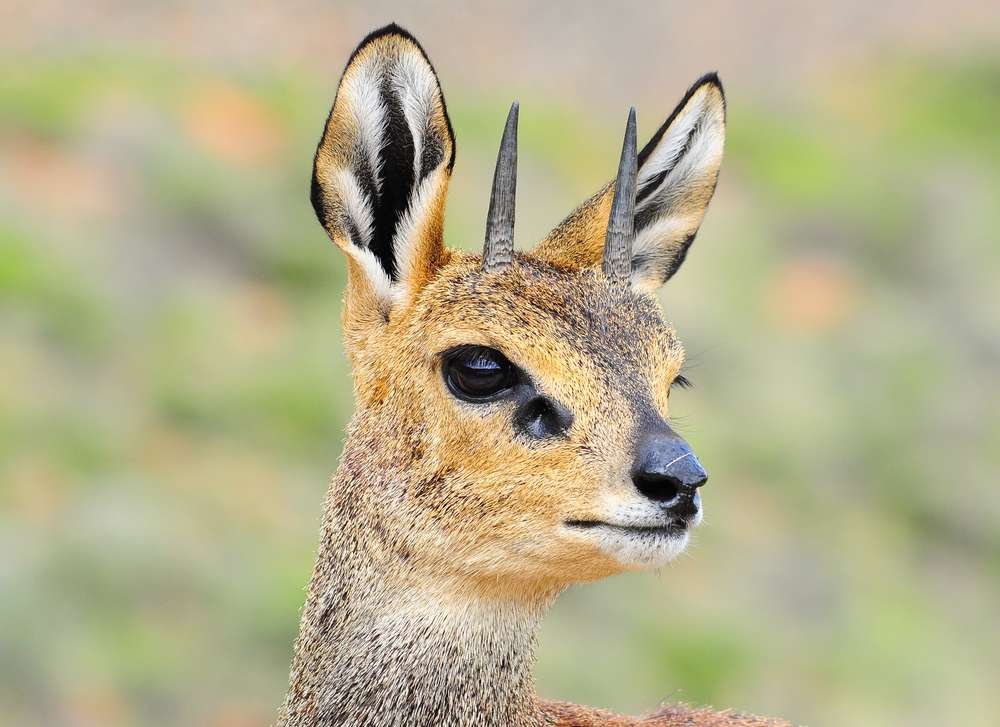Zambian Klipspringer
- Oreotragus oreotragus centralis
- IUCN Status: Least Concern
- Trend: decreasing

- Kingdom: Animalia
- Phylum: Chordata
- Class: Mammalia
- Order: Artiodactyla
- Family: Bovidae
- Subfamily: Oreotraginae
- Genus: Oreotragus
Share:
General Information
The Zambian klipspringer is a small antelope found in eastern and southern Africa. It is one of the most monogomous antelopes in Zambia. The scientific name Oreotragus oreotragus is a combination of greek words which mean “mountain he-goat”. There are 11 subspecies of klipspringer and the Oreotragus oreotragus centralis also know as the Zambian Klipspringer can be found in Zambia.
Description
It is a small, sturdy antelope. It has a yellowish gray to reddish brown coat that acts as an efficient camouflage. Prominent facial features include the brown forehead, short ears marked with black, prominent preorbital glands near the eyes, and white lips and chin. The horns are short and spiky and present only on males.- Shoulder height: 43–60 cm
- Weight: 8 to 18 kg
Ecology & Behaviour
The Zambian klipspringer is a very gregarious animal. It is one of the most monogomous antelopes in Zambia. Mates form long-term, lifelong bonds and they usually are within 5m of each other at most times. They take turns at keeping a lookout for predators while the other feeds, and face any danger together. The klipspringer is a nocturnal animal that has been noted to be active on moon lit nights.
They greet one another by rubbing cheeks at social meetings and can usually be found in heards of 8 or more individuals. They browse on herbs and shrubs and drink water when it is available but can draw enough water from their food.
Conservation
It is listed as “Least concern” on the IUCN Red list.
Distribution & Habitat
The klipspringer prefer rocky hillsides and valleys with sparse vegetation and occur sparsely in the Muchinga escarpment of the Luangwa Valley and occasionally in the north of the country
Interaction with Humans
The klipspringer is hunted for its meat, leather and hair. However, there are no major threats to the survival of the klipspringer, as its habitat is inaccessible and unfavourable for hunting.
No donation to this project yet.
| M | T | W | T | F | S | S |
|---|---|---|---|---|---|---|
| 1 | 2 | 3 | ||||
| 4 | 5 | 6 | 7 | 8 | 9 | 10 |
| 11 | 12 | 13 | 14 | 15 | 16 | 17 |
| 18 | 19 | 20 | 21 | 22 | 23 | 24 |
| 25 | 26 | 27 | 28 | 29 | 30 | |


